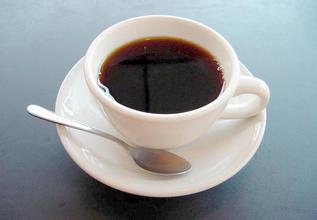Introduction to the flavor and taste characteristics of Nicaraguan lemon manor coffee with fragrant flavor
Nicaragua is located in the central part of Central America, bounded by Honduras in the north, Costa Rica in the south, the Caribbean Sea in the east and the Pacific Ocean in the west, with a total area of 130400 square kilometers. [1]
Topography and geomorphology
The central north of Nicaragua is a highland; the east is a coastal plain with many jungle swamps and low-lying terrain; the west is a coastal lowland with many volcanoes and lakes in the east. [4]
Climate
Nicaragua plain high temperature and rainy, is a tropical maritime climate; the western coastal lowlands, precipitation is significantly less than the east, and there are dry and wet seasons, belonging to the savanna climate; the central highland annual average temperature of 18 ℃, annual precipitation of 1500 ℃ 2500 mm, May-December for the rainy season Nicaraguan capital Managua (Managua) is located in the west of the country, located on the south bank of Lake Managua, and hence the name. The northwest is 140 kilometers away from the Collinto seaport on the Pacific coast. 55 meters above sea level. It is a Spanish city with beautiful scenery. Because it is located on the east side of the Pacific volcanic active seismic belt, there have been four strong earthquakes in the city in the past 100 years, one of which caused the worst damage to the city in December 1972. The rebuilt Managua has taken many important measures in reducing population density, moving large enterprises to other places and improving the earthquake-proof capacity of buildings. The word Managua comes from the Indian Naval language, and its meaning has two interpretations, one is "Mexican place", and the other is "waterside". About 10,000 years ago, there were human activities on the shores of Lake Managua, and the remains of ancient human activities can be seen from the Acorink site. As a result of natural disasters such as earthquakes, residents have moved many times. When the Spaniards conquered Nicaragua in the early 16th century, it was still an important Indian village. It became a city in 1846. It was designated as the capital of the Republic in 1852. From then on, it became the political center of the country.
Madriz is an ecological coffee with a very hard shell. In the pure natural planting environment, it uses more complex operations to maintain the delicate aroma and taste of the coffee; it is produced in northern Nicaragua between Matagalpa and Jinotega, with an average annual rainfall of 1500-1700mm and a temperature of 20-29 degrees Celsius. All use the way of manual selection of coffee, only labor and time costs more than ordinary beans, many Nicaraguans have a low flavor, chocolate, caramel sweet, obvious almond flavor, bright sour taste, different from the rising tone of bright fruit acid in Central America. Nicaraguan coffee planting ecology has a unique environment, covered with fertile volcanic soil, coupled with shade planting methods, established a good growth physique, so that Nicaraguan beans not only have rich mellow but also fragrant taste, in the eyes of international coffee experts as high-quality, and gradually attracted the attention of the boutique industry The Cup of Excellence is the most esteemed award given out for specialty coffees. These awards come from a strict competition that selects the very best... The Cup of Excellence competition is selected by the Coffee Competition, an American non-profit organization. Such competitions will last for dozens of days, and only a very small number of coffee beans have been selected as the highest honor after being severely evaluated by coffee judges and world-class professional cup testers. Then the organizers auctioned the coffee beans to bidders all over the world, and the competition was often extremely fierce. Nicaragua in Nicaragua is known as the "country of volcanic lakes" because of its many lakes and volcanoes. The volcanic soil rich in minerals produces high-quality coffee beans. The most famous coffee produced by volcanic ash soil is the winning coffee beans in the kona Galagua Nicaragua 2005 CoE (Cup of Excellence) competition in Hawaii, which produces very little and is relatively rare. The appearance is very neat, and there is no need to pick and choose. It is recommended that the baking method explodes the baking degree of beans and cinnamon roast cinnamon in the middle.

Important Notice :
前街咖啡 FrontStreet Coffee has moved to new addredd:
FrontStreet Coffee Address: 315,Donghua East Road,GuangZhou
Tel:020 38364473
- Prev

An introduction to the characteristics of coffee flavor in Lazmus Manor, Colombia, with a smooth taste.
In his letter from Jamaica in 1815, Bolivar envisioned that when South America was liberated from Spanish colonial rule, New Granada and Venezuela should form a country, named Colombia. In August 1819, Bolivar's Patriotic Army defeated the Spanish colonial army at the Battle of Boyaca and liberated Bogota. So, New Granada and Venezuela
- Next

Introduction to the flavor and taste of coffee from the plump Paradise Bird Manor in Papua New Guinea
Papua New Guinea is divided into 21 provinces and capital districts (Port Moresby). The names of the provinces are as follows: central (once translated as Central), Northern (once translated as North), Chinbu, East New Britain, East Sepik, East Highlands, Enga, Gulf, Madan, Manus, Min Bay, Morobi, New Ireland, North Solomon, South Highlands, West New Britain, Siseppe
Related
- Does Rose Summer choose Blue, Green or Red? Detailed explanation of Rose Summer Coffee plots and Classification in Panamanian Jade Manor
- What is the difference between the origin, producing area, processing plant, cooperative and manor of coffee beans?
- How fine does the espresso powder fit? how to grind the espresso?
- Sca coffee roasting degree color card coffee roasting degree 8 roasting color values what do you mean?
- The practice of lattes: how to make lattes at home
- Introduction to Indonesian Fine Coffee beans-- Java Coffee producing area of Indonesian Arabica Coffee
- How much will the flavor of light and medium roasted rose summer be expressed? What baking level is rose summer suitable for?
- Introduction to the characteristics of washing, sun-drying or wet-planing coffee commonly used in Mantenin, Indonesia
- Price characteristics of Arabica Coffee Bean Starbucks introduction to Manning Coffee Bean Taste producing area Variety Manor
- What is the authentic Yega flavor? What are the flavor characteristics of the really excellent Yejasuffi coffee beans?

